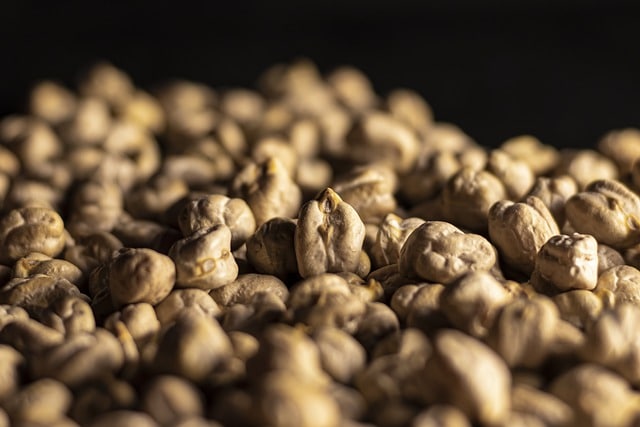Gram Seed Properties
Gram seed (Cicer arietenum) is a dicotyledonous, and non-endospermic seed.
The seed is heart-shaped – being rounded and blunt at one end, and pointed at the other end.
A notch begins at the rounded end of the gram seed and stretches along one side of the seed up to a shallow oval pit situated near the pointed end.
This notch presents the position of the raphe and The oval pit is the hilum.
A tiny hole, the micropyle, is situated at the outer edge of the hilum.
The Cicer arietenum seed coat is rough to the touch. It is made up of a thick, brownish testa and a thin, whitish tegmen, both of which are fused together.
Within the gram seed coat lies a fleshy, yellowish body, embryo.
It consists of two large fleshy cotyledons connected to each other by a small axis.
The latter consists of a tiny radicle that points towards the micropyle and a plumule which points in the opposite direction.
The tip of the plumule is differentiated into a number of minute, feather-like leaves.
The cotyledons store a large amount of food material.
Gram Seed Germination
Like the castor seed germination, the gram seed begins to germinate in the presence of water.
Water enters the seed through the micropyle and the porous seed coat and causes the seed to swell.
Food in the cotyledons is made soluble and transported to the plumule and radicle which begin to grow.
The latter breaks through the seed coat at the region of the micropyle and grows downwards as the primary root.
In this way, it develops into the root system of the plant.
Meanwhile, the cotyledons separate slightly, allowing the plumule to come out.
Initially, the plumule is bent in the form of a hook.
The portion of the axis lying between the plumule and the cotyledons, the epicotyl, begins to elongate, pushing the hooked plumule upwards as it does so.
By being hooked, the delicate apex of the plumule is protected as it moves through the soil.
When the plumule is brought above the surface of the ground it straightens.
The tiny leaves enlarge and turn green to form the first foliage leaves.
These soon begin to manufacture food for the plant.
Eventually, the plumule develops into the shoot system.
The cotyledons are responsible for supplying food for the initial growth of the plumule and radicle,
They are not brought above the surface of the ground. As growth proceeds, their food resources are used up so that they become thinner, dry up, and finally rot away.
The type of germination displayed by the gram seed is hypogeal germination because the cotyledons always remain below the surface of the soil.








